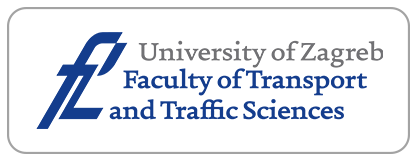Real-Time Adaptive Traffic Flow Prediction Based on a GE-GRU-KNN Model

Downloads
Traffic flow prediction is an important part of urban intelligent transportation systems. However, due to strong nonlinear characteristics and spatiotemporal correlations of the traffic within the network, traffic flow prediction has been a challenging task. In order to capture the spatiotemporal correlation, and improve the traditional methods of using predefined adjacency matrices that cannot effectively characterise the dynamic correlation of traffic flow, a GE-GRU-KNN model for predicting the road traffic flow is proposed. Specifically, the spatial representation of the road network learned by GE is used to automatically extract the spatial features of the network; GRU is used to learn the nonlinear characteristics of the time series to capture the temporal correlation of the traffic flow; finally, the KNN algorithm is introduced to combine real-time traffic flow and historical data and adaptively update the fusion weights of predicted values for different road sections. The method enables the model to effectively characterise the dynamic correlation of traffic flow. An experiment using traffic flow data from 22 detectors on California freeways is conducted. The results show that compared with traditional methods, the prediction error of this method is reduced by 1.08%–14.71%, indicating that the hybrid GE-GRU-KNN model exhibits good performance.
Downloads
Ali A, Zhu Y, Zakarya M. Exploiting dynamic spatio-temporal graph convolutional neural networks for citywide traffic flows prediction. Neural Networks. 2021;145:233-247. DOI: 10.1016/j.neunet.2021.10.021.
Wang H, Zhang R, Cheng X, Yang L. Hierarchical traffic flow prediction based on spatial-temporal graph convolutional network. IEEE Transactions on Intelligent Transportation Systems. 2022;23:16137-16147. DOI: 10.1109/TITS.2022.3148105.
Xu Y, et al. Dynamic traffic correlations based spatio-temporal graph convolutional network for urban traffic prediction. Information Sciences. 2023;621:580-595. DOI: 10.1016/j.ins.2022.11.086.
Kumar SV, Vanajakshi L. Short-term traffic flow prediction using seasonal ARIMA model with limited input data. European Transport Research Review. 2015;7. DOI: 10.1007/s12544-015-0170-8.
Wang H, et al. Empirical mode decomposition-autoregressive integrated moving average hybrid short-term traffic speed prediction model. Transportation Research Record. 2014;2460:66-76. DOI: 10.3141/2460-08.
Chi Z, Shi L. Short-term traffic flow forecasting using ARIMA-SVM algorithm and R. 2018 5th International Conference on Information Science and Control Engineering, 2018. p. 517-522, DOI: 10.1109/ICISCE.2018.00114.
Ye J, Xue S, Jiang A. Attention-based spatio-temporal graph convolutional network considering external factors for multi-step traffic flow prediction. Digital Communications and Networks. 2022;8:343-350. DOI: 10.1016/j.dcan.2021.09.007.
Xu Y, et al. Urban traffic flow prediction: A spatio-temporal variable selection-based approach. Journal of Advanced Transportation. 2016;50:489-506. DOI: 10.1002/atr.1356.
Chen Y, et al. Acting as a decision maker: Traffic-condition-aware ensemble learning for traffic flow prediction. IEEE Transactions on Intelligent Transportation Systems. 2022;23:3190-3200. DOI: 10.1109/TITS.2020.3032758.
Wang D, et al. Bayesian optimization of support vector machine for regression prediction of short-term traffic flow. Intelligent Data Analysis. 2019;23:481-497. DOI: 10.3233/IDA-183832.
Cheng S, Lu F, Peng P, Wu S. Short-term traffic forecasting: An adaptive ST-KNN model that considers spatial heterogeneity. Computers, Environment and Urban Systems. 2018;71:186-198. DOI: 10.1016/j.compenvurbsys.2018.05.009.
Tang J, et al. An improved fuzzy neural network for traffic speed prediction considering periodic characteristic. IEEE Transactions on Intelligent Transportation Systems. 2017;18:2340-2350. DOI: 10.1109/TITS.2016.2643005.
Liu Z, et al. A hybrid short-term traffic flow forecasting method based on neural networks combined with K-nearest neighbor. Promet-Traffic & Transportation. 2018;30:445-456. DOI: 10.7307/ptt.v30i4.2651.
Akin M, Sagiroglu S. Short term traffic speed prediction with RNN method for roads characterized by density-based clustering method. Journal of The Faculty of Engineering and Architecture of Gazi University. 2022;37:581-593. DOI: 10.17341/gazimmfd.921035.
He Z, Chow C, Zhang J. STANN: A spatio-temporal attentive neural network for traffic prediction. IEEE Access. 2019;7:4795-4806. DOI: 10.1109/ACCESS.2018.2888561.
Xia D, et al. RSAB-ConvGRU: A hybrid deep-learning method for traffic flow prediction. Multimedia Tools and Applications. 2023;83:20559-20585. DOI: 10.1007/s11042-023-15877-x.
Lu H, et al. A temporal-aware LSTM enhanced by loss-switch mechanism for traffic flow forecasting. Neurocomputing. 2021;427:169-178. DOI: 10.1016/j.neucom.2020.11.026.
Walch M, Neubauer M, Schildorfer W. Floating car data-based short-term travel time forecasting with deep recurrent neural networks incorporating weather data. Journal of Transportation Engineering Part A-Systems. 2023;149(6). DOI: 10.1061/JTEPBS.TEENG-7647.
Qu L, et al. Features injected recurrent neural networks for short-term traffic speed prediction. Neurocomputing. 2021;451:290-304. DOI: 10.1016/J.NEUCOM.2021.03.054.
An J, et al. A novel fuzzy-based convolutional neural network method to traffic flow prediction with uncertain traffic accident information. IEEE Access. 2019;7:20708-20722. DOI: 10.1109/ACCESS.2019.2896913.
Li W, et al. Real-time movement-based traffic volume prediction at signalized intersections. Journal of Transportation Engineering Part A-Systems. 2020;146(8). DOI: 10.1061/jtepbs.0000384.
Zhang Y, et al. TrafficGAN: Network-scale deep traffic prediction with generative adversarial nets. IEEE Transactions on Intelligent Transportation Systems. 2021;22:219-230. DOI: 10.1109/TITS.2019.2955794.
Mendez M, Merayo M, Nunez M. Long-term traffic flow forecasting using a hybrid CNN-BiLSTM model. Engineering Applications of Artificial Intelligence. 2023;121:106041. DOI: 10.1016/j.engappai.2023.106041.
Ni Q, Zhang M. STGMN: A gated multi-graph convolutional network framework for traffic flow prediction. Applied Intelligence. 2022;52:15026-15039. DOI: 10.1007/s10489-022-03224-w.
Zhang M, et al. Cellular network traffic prediction with hybrid graph convolutional recurrent network. Wireless Personal Communications. 2024;138:1867-1892. DOI: 10.1007/s11277-024-11580-8.
Li B, et al. MAST-GNN: A multimodal adaptive spatio-temporal graph neural network for airspace complexity prediction. Transportation Research Part C: Emerging Technologies. 2024;160:104521. DOI: 10.1016/j.trc.2024.104521.
Liu J, Wu N, Qiao Y, Li Z. A scientometric review of research on traffic forecasting in transportation. IET Intelligent Transport Systems. 2021;15:1-16. DOI: 10.1049/itr2.12024.
Yu B, Yin H, Zhu Z. Spatio-temporal graph convolutional networks: A deep learning framework for traffic forecasting. 27th International Joint Conference on Artificial Intelligence (IJCAI), 2018. 2018; p. 3634-3640. DOI: 10.48550/arXiv.1709.04875.
Guo S, et al. Attention based spatial-temporal graph convolutional networks for traffic flow forecasting. AAAI Conference on Artificial Intelligence. 2019; p. 922-929. DOI: 10.1609/aaai.v33i01.3301922.
Bai L, et al. Adaptive graph convolutional recurrent network for traffic forecasting. Advances in Neural Information Processing Systems. 2020;3. DOI: 10.48550/arXiv.2007.02842.
Xu D, et al. Real-time road traffic state prediction based on ARIMA and Kalman filter. Frontiers of Information Technology & Electronic Engineering. 2017;18:287-302. DOI: 10.1631/FITEE.1500381.
Cao L, et al. A spatiotemporal multiscale graph convolutional network for traffic flow prediction. IEEE Transactions on Intelligent Transportation Systems. 2024;25:8705-8718. DOI: 10.1109/TITS.2024.3354802.
Chai W, et al. GSA-KELM-KF: A hybrid model for short-term traffic flow forecasting. Mathematics. 2024;12(1):103. DOI: 10.3390/math12010103.
Zhang L, et al. A Hybrid forecasting framework based on support vector regression with a modified genetic algorithm and a random forest for traffic flow prediction. Tsinghua Science and Technology. 2018;23:479-492. DOI: 10.26599/TST.2018.9010045.
Liu J, et al. Data fusion for multi-source sensors using GA-PSO-BP neural network. IEEE Transactions on Intelligent Transportation Systems. 2021;22:6583-6598. DOI. 10.1109/TITS.2020.3010296.
Guo F, Polak J, Krishnan R. Predictor fusion for short-term traffic forecasting. Transportation Research Part C: Emerging Technologies. 2018;92:90-100. DOI: 10.1016/j.trc.2018.04.025.
Zheng H, Lin F, Feng X, Chen Y. A hybrid deep learning model with attention-based conv-LSTM networks for short-term traffic flow prediction. IEEE Transactions on Intelligent Transportation Systems. 2021;22:6910-6920. DOI: 10.1109/TITS.2020.2997352.
Mou L, Zhao P, Xie H, Chen Y. T-LSTM: A long short-term memory neural network enhanced by temporal information for traffic flow prediction. IEEE Access. 2019;7:98053-98060. DOI: 10.1109/ACCESS.2019.2929692.
Cui Z, Ke R, Pu Z, Wang Y. Stacked bidirectional and unidirectional LSTM recurrent neural network for forecasting network-wide traffic state with missing values. Transportation Research Part C: Emerging Technologies. 2020;118:102674. DOI: 10.1016/j.trc.2020.102674.
Mondal M, Rehena Z. Stacked LSTM for short-term traffic flow prediction using multivariate time series dataset. Arabian Journal for Science and Engineering. 2022;47:10515-10529. DOI: 10.1007/s13369-022-06575-1.
Chauhan N, Kumar N, Eskandarian A. A novel confined attention mechanism driven Bi-GRU model for traffic flow prediction. IEEE Transactions on Intelligent Transportation Systems. 2024;25:9181-9191. DOI: 10.1109/TITS.2024.3375890.
Luo X, et al. Spatiotemporal traffic flow prediction with KNN and LSTM. Journal of Advanced Transportation. 2019. DOI: 10.1155/2019/4145353.
Zhao L, et al. T-GCN: A temporal graph convolutional network for traffic prediction. IEEE Transactions on Intelligent Transportation Systems. 2020;21:3848-3858. DOI: 10.1109/TITS.2019.2935152.
Zhou L, et al. Research on short-term traffic flow prediction based on KNN-GRU. 2022 China Automation Congress (CAC). 2022;1924-1928. DOI: 10.1109/CAC57257.2022.10055164.
Zhuang W,Cao Y. Short-term traffic flow prediction based on a K-nearest neighbour and bidirectional long short-term memory model. Applied Sciences-Basel. 2023;13(4):2681. DOI: 10.3390/app13042681.
Mikolov T, et al. Distributed representations of words and phrases and their compositionality. Advances in Neural Information Processing Systems. 2013;3111-3119. DOI: 10.48550/arXiv.1310.4546.
Zhang X, et al. Forecasting the crowd: An effective and efficient neural network for citywide crowd information prediction at a fine spatio-temporal scale. Transportation Research Part C: Emerging Technologies. 2022;143:2022. DOI: 10.1016/j.trc.2022.103854.
Gu Y, et al. Short-term prediction of lane-level traffic speeds: A fusion deep learning model. Transportation Research Part C: Emerging Technologies. 2019;106:1-16. DOI: 10.1016/j.trc.2019.07.003.
Liu M, Liu G, Sun L. Spatial–temporal dependence and similarity aware traffic flow forecasting. Information Sciences. 2023;81-96. DOI: 10.1016/j.ins.2022.12.107.
Bai J, et al. A3T-GCN: Attention temporal graph convolutional network for traffic forecasting. Isprs International Journal of Geo-Information. 2021;10(7):485. DOI: 10.3390/ijgi10070485.
Copyright (c) 2025 Xiangyu YI, Hongmei ZHOU, Shaopeng ZHONG

This work is licensed under a Creative Commons Attribution-NonCommercial 4.0 International License.




















